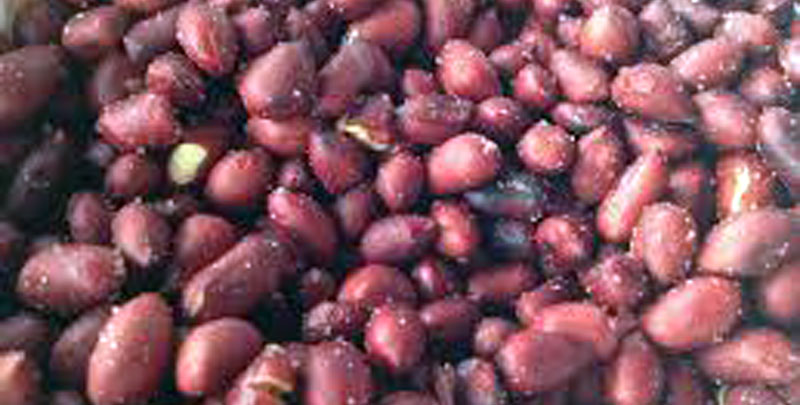The war on aflatoxin contamination in human food and livestock feed on the African continent has gathered momentum as seen by a concerted effort by member countries to increase understanding of the problem, which researchers say is a major cause of liver cancer.
The heightened sense of concern about the prevalence and impact of toxic food comes in the wake of research findings that much of the food consumed in Uganda and many African countries including packed foods that are sold in supermarkets is contamination by aflatoxins.
Because of its orderless, and sometimes invisible nature, the moulds have eluded linguists in many of Uganda’s tribes. In Luganda though, they could be identified as Obukuku, but researchers warn that they may be present in food such as milk, Eshabwe (ghee) and beer.
Aflatoxins are toxic compounds produced by fungi or moulds that colonise food such are grains, and eshabwe. Experts say that aflatoxins remain present in food even when milled or cooked below 500 degrees Celsius.
Maize and ground nuts, which are major staple foods eaten across Uganda and many African countries, have been identified as especially risky. Experts say that maize gets easily contaminated because farmers harvest it while it is still moist, or dry it on bare ground and keep it in the stores.
In the case of ground-nuts, Dr. Andrew Kiggundu, a senior scientist at the National Agricultural Research Laboratories (NARL) at Kawanda notes that fungi are attracted to g-nuts because they tend to have higher moisture content even during storage.
Despite the adverse health effects on humans and livestock that arise from eating aflatoxin contaminated food, as well as the impact on trade, there is concern that little is being done to address it.
A recent study on the impacts of aflatoxins estimated that the problem not only renders everyone in Uganda vulnerable, but also greatly undermines the country’s export earnings, household incomes, and food security.
The study, sponsored by the Partnership for Aflatoxin Control in Africa (PACA), an African Union initiative to champion the fight against aflatoxins, found that Ugandans lose nearly 80 million US dollars (Approx. Ushs265billion) in income arising from contamination of food with the toxic moulds that colonise the grains and other food stuffs.
But the overall economic impact of the problem runs into hundreds of millions of dollars considering that the problem undermines exports, impairs food security and leaves the economy and the health sector with a huge bill arising from treating patients with liver cancer.
The study found out for example that Uganda loses US$38m (Approx. Ushs127bn) in agricultural exports alone, because of aflatoxin contamination. A study on the economic cost of aflatoxin related diseases in Uganda is yet to be carried out, according to Kaaya.
Prof. Archileo Kaaya, a renowned expert on aflatoxin contamination of food in many African countries and also a member of National Technical Working Group on Aflatoxin, cited an example of cited an example of blood from over 100 individuals from South Western Uganda being contaminated with aflatoxins, including blood of five babies that were exclusively breastfeeding, implying that these babies got the toxins from their mothers.
Fortunately, with the stewardship of the African Union, aflatoxin has emerged on the radar screens of many African countries as a critical danger to food security, health and trade.
Prof. Kaaya says that since PACA’s establishment, the initiative has made significant inroads into helping governments in six pilot countries realise the potential impact of the toxins on their populations’ health and the wider economy.
“In Uganda, PACA has facilitated the formation of multi-sectoral working group that has brought together technical persons from ministries such as trade, agriculture, health as well as from the civil society and the academia and they have come up with strategies to integrate aflatoxin management into Uganda’s National Development Plan (NDP),” says Kaaya.
“PACA has also supported a number of pilot studies as well as coming up with an Aflatoxin Action Plan that will be integrated into Uganda’s Agricultural Sector Strategic Plan (ASSP)
Weak regulation
Although the government of Uganda has set 10 parts per billion (ppb) as the maximum allowable level of aflatoxin in grains, there is concern about weaknesses by the Uganda National Bureau of Standards (UNBS) in implementing the standard.
Agricultural researchers to the rescue?
Meanwhile, researchers at the National Crop Resources Research Institute (NaCRRI) at Namulonge have revealed plans to identify and culture a non-toxin-causing species of fungi that will out-compete the Aspergillus flavus, which produces toxins that damage the liver.
Other aflatoxin control efforts under way in Uganda include the development of ground nuts that are resistant to fungus using modern biotechnology tools at Kawanda.
The Director of NaCRRI Dr. Godfrey Asea told The Sunrise recently that his institute recently released maize varieties that are tolerant to aflatoxins.
henrylutaaya{at}gmail.com
+256 787 288 345








